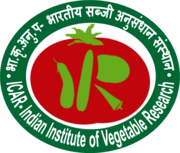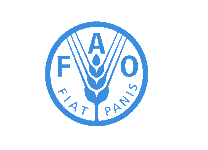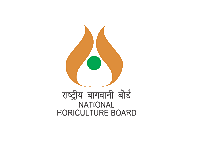-
भारत सरकारGOVERNMENT OF INDIA
-
कृषि और किसान कल्याण मंत्रालयMINISTRY OF AGRICULTURE AND FARMER'S WELFARE
tiwarishailu

Management of Vegetable Genetic Resources, Genetic Improvement of Solanaceous Vegetables, Biotechnological Interventions in Vegetable improvement, Technology Management and Commercialization, IPR issues
Verma S., Karihaloo J.L., Tiwari Shailesh K., Magotra R., Koul A. K. (2007) Genetic diversity in Eremostachys superba Royle ex Benth. (Lamiaceae), an endangered Himalayan species, as assessed by RAPD. Genetic Resources and Crop Evolution, 54: 221-229.
Barna K.S., Karihaloo J.L. and Tiwari Shailesh K., (2007). Long-term field performance of micropropogated Aloe vera plants. Plant Cell Biotechnology and Molecular Biology, 8: 113-118.
Kumar G., Meena B.L., Kar R., Tiwari Shailesh K., Gangopadhyay K.K., Bisht I. S. and MahajanR.K. (2008).Morphological diversity in brinjal (Solanum melongena L.) germplasm accessions. Plant Genetic Resources: Evaluation and Utilization, 6: 232:236.
Gupta S., Srivastava M., Mishra G.P., Naik P.K., Chauhan R.S. and Tiwari Shailesh K. (2008). Use of ISSR and RAPD markers for comparative analysis of genetic diversity among different Jatropha curcas genotypes. African Journal of Biotechnology, 7: 4230-4243.
Mishra G.P., Mishra S.K., Tiwari Shailesh K. and Kumar A. (2008). Inheritance of lentil resistance to rust (Uromyces fabae Pers.) de Bary). Indian Journal of Agricultural Sciences, 78: 994-996.
Tiwari Shailesh K., Gaikwad A.B., Bhat K.V., Karihaloo J.L. and Mandal B.B. (2008). Transferability of STMS markers from solanaceous vegetable crops to brinjal (Solanum melongena L.). Pusa Agri Sciences, 31: 35-43.
Tiwari Shailesh K., Karihaloo J.L., Hameed N. and Gaikwad A.B. (2009). Molecular characterization of brinjal (Solanum melongena L.) cultivars. Journal of Plant Biochemistry and Biotechnology, 18: 189-195.
Kumar G., Mahajan R.K., Sapra R.L., Gangopadhyay K.K., Meena B.L., Tiwari Shailesh K., Mishra S.K., Sharma S.K. (2009). Developing core set in brinjal (Solanum melongena L.) with limited traits. Indian Journal of Plant Genetic Resources, 22: 206-210.
Singh B K, Thakur A K, Tiwari Shailesh K., Siddiqui S A, Singh V V, Rai P K. (2012). Transferability of Brassica-Derived microsatellites to related genera and their implications for phylogenetic analysis. National Academy Science Letters, 35 (1): 37-44.
Kumar G, Sivraj N, Kamala V, Gangopadhyay KK, Pandey S, Tiwari Shailesh K., Panwar NS, Meena BL, Dutta M (2013). Diversity analysis in eggplant germplasm in india using DIVA-GIS approach. Indian Journal of Horticulture, 70 (4): 519-525.
Sinha DP, Saxena S, Singh M, Tiwari Shailesh K. (2013). Phylogenetic relationship of coat protein genomic components of Chilli leaf curl virus. Vegetable Science, 40 (2): 149-154.
Patel JP, Singh U, Kashyap SP, Tiwari Shailesh K., Singh DK, Singh M (2013). Heterosis for productivity traits in brinjal (Solanum melongena L.). Vegetable Science, 40 (1): 80-82.
Patel P, Singh U, Kashyap SP, Singh DK, Goswami A, Tiwari Shailesh K., Singh M (2013). Combining ability for yield and other quantitative traits in eggplant (Solanum melongena L.). Vegetable Science, 40 (1): 61-64.
Yasin, J. K., Bhat, K.V., Nizar, M. A., Rajkumar S., Verma, M., Verma, N., Pandey, S., Tiwari, Shailesh K. and Radhamani, J. (2014). Existence of alternate defence mechanisms for combating moisture stress in Horse gram [Macrotyloma uniflorum (Lam.) Verdc.]. Legume Research, 37 (2): 139-148.
Bhardwaj NK, Singh V, Tiwari Shailesh K and Singh M. (2014). Phenotyping of recombinant inbred lines for phomopsis blight in brinjal. Vegetable Science, 41 (2): 195-197.
Pradhan N., Prakash, P., Manimurugan, C., Tiwari, Shailesh K., Sharma, R.P. and Singh, P.M. (2015) Screening of tomato genotypes using osmopriming with PEG 6000 under salinity stress. Research in Environment and Life Sciences, 8(2): 245-250.
Singh U, Patel PK, Singh AK, Tiwari V, Kumar R, Rai N, Bahadur A, Tiwari Shailesh K, Singh M and Singh B. (2015). Screening of tomato genotypes under high temperature stress for reproductive traits. Vegetable Science, 42 (2): 52-55.
Bahadur A, Rai N, Kumar R, Tiwari Shailesh K, Singh AK, Rai AK, Singh U, Patel PK, Tiwari V, Rai AB, Singh M and Singh B. (2015). Grafting tomato on eggplant as a potential tool to improve waterlogging tolerance in hybrid tomato. Vegetable Science, 42 (2): 82-87.
Halder J, Khushwaha D, Singh A, Tiwari Shailesh K, Rai AB and Singh B (2015) Whether Leucinodes orbonalis Guenée is becoming a serious problem to brinjal seedlings in nursery? Pest Management and Horticulture Ecosystem 21 (2): 231-232.
Singh PK, Tiwari Shailesh K, Rai N, Rai K and Singh M. (2016). Antioxidant and phytochemical levels and their interrelation in stem and leaf extract of water spinach (Ipomea aquatica). Indian Journal of Agricultural Sciences, 86 (3): 347-354.
Lal H, Rai N., Rai KK and Tiwari Shailesh K. (2016). Microsatellite markers to study genetic relationship among cowpea. Indian Journal of Agricultural Sciences, 86(5):410-416.
Tiwari SK, Bisht IS, Kumar G and Karihaloo JL (2016). Diversity in brinjal (Solanum melongena L.) landraces for morphological traits of evolutionary significance. Vegetable Science 43 (1): 106-111
Mishra GP, Singh B, Seth T, Singh AK, Halder J, Nagendran K, Tiwari Shailesh K and Singh PM. (2017). Biotechnological advancements and begomovirus management in okra (Abelmoschus esculentus L.): Status and perspectives. Frontiers in Plant Science 8 (360):doi: 10.3389/fpls.2017.00360.
Patel VK, Singh U, Goswami A, Tiwari Shailesh K, Singh M. (2017). Genetic variability, interrelationships and path analysis for yield attributes in eggplant. Environment and Ecology, 35 (2A): 877-880.
Halder J, Kushwaha D, Dey D, Tiwari SK, Rai AB, Singh B. (2017). Biology of stem borer, Euzophera perticella (Lepidoptera: Pyralidae) and association of endoparasetoid Pristomerus euzopherae (Hymenoptera: Ichneumonidae) in grafted and ratoon brinjal crop. Indian Journal of Agricultural Sciences 87 (6): 801-803.
Tiwari SK, Srivastava Y, Singh VK, Singh M, Singh B (2017). LTR retroelement in genes related to abiotic stress in Capsicum annuum L. Vegetable Science 44 (2): 1-7
Vaish S, Awasthi P, Tiwari S, Tiwari SK, Gupta D, Basantani M (2017). In-silico genome-wide identification and characterization of the glutathione S-transferase gene family in Vigna radiata. Genome DOI: 10.1139/gen-2017-0192.
Koley TK, Tiwari SK, Sarkar A, Nishad J, Goswami A, Singh B (2018). Antioxidant Potential of Indian Eggplant: Comparison Among White, Purple and Green Genotypes Using Chemometrics. Agricultural Research. DOI: 10.1007/s40003-018-0347-1
Seth T, Mishra GP, Singh B, Kashyap S, Mishra SK, Tiwari SK, Singh PM (2018). Optimization of quality DNA isolation protocol from various mucilage rich cultivated and wild Abelmoschus sp. and its validation through PCR amplification. Vegetable Science, 45(1): 1-6.
Mishra AK, Tiwari KN, Mishra P, Tiwari SK, Mishra SK and Singh J (2020). Factors affecting the efficiency of in vitro regeneration from seedling-derived nodal explants of Nyctanthes arbor-tritis L. and evaluation of genetic fidelity. Plant Biosystems. 154 (2): 197-205.
Pandey P, Ansari W, Kashyap SP, Bhardwaj DR, Tiwari SK and Singh B (2019). Genetic diversity of Indian bitter gourd (Momordica charantia) by ISSR and morphological markers. Indian Journal of Agricultural Sciences. 89(12): 2037-2042.
Mishra P, Tiwari SK, Kashyap SP, Tiwari KN and Singh M. (2020). High –density genetic linkage map based on arbitrary and microsatellite markers using inter-specific recombinant inbred lines in eggplant (Solanum melongena L). DOI: 10.1007/s13562-020-00549-w.
Mishra AK, Tiwari KN, Mishra P, Tiwari SK, Mishra SK and Saini R (2019). Effect of cytokinin and MS medium composition on efficient shoot proliferation of Nyctanthes arbor-tritis L. through cotyledonary node explant and evaluation of genetic fidelity and antioxidant capacity of regenerants. South African Journal of Botany. 127: 284-292.
.Kashi Himani (IVBL-26) a white Brinjal variety was identified at institute level and proposal sent to SVRC. (2017-18).
Kashi Vijay (IVBL-23) a medium long, light purple fruited variety of brinjal identified for cultivation in Zone iV through AICRP (VC) in 2019-20
Kashi Poi-2: Luxuriant Plant growth with Bush-type growth habit, Soft and succulent green leaves of ovate shape measuring 10.1 cm long and 5.8 cm wide. Soft and lush green shoots of about 22 cm in length and 0.6 cm in dia. First picking starts 38-40 days after transplanting and continues up to 140-150 days at 20-30 days interval. Used for making pakode, saag, curry, stews, soup, dal mix, paratha, etc. Suitable for making leaf concentrate and dry leaf powder. (2017-18)
Kashi Poi-3: Luxuriant Plant growth with twinning growth habit. Soft and succulent dark green ovate leaves measuring 9.7 cm long and 6.2 cm wide with purple colour Petiole; Stem Soft, tender and thin shoots bright purple colour. Late flowering, delayed by 40-60 days as compared to local check. First picking starts 40 days after transplanting and continues up to 240-250 days at 20-25 days interval. Used for making pakode, saag, curry, stews, soup, dal mix, paratha, etc. Suitable for making leaf concentrate and dry leaf powder. (2017-18)
Identification of high temperature stress genotypes in tomato: EC-538423, M-1-4, Suncherry, EC-538380 and VRT-101A for morphological, physiological and fruit quality traits in tomato (2013-14). In response to high temperature stress, CLN-1621, CLN-2026, EC538441, EC620419, Sun cherry, EC538380 and VRT-101A performed better for morphological, physiological and fruit quality traits in tomato (2014-15).
Identification of tomato genotypes tolerant to high moisture stress: Genotypes C-11-3, C-9-1, C-21-1, C-1-1 and D-3-1 showed tolerance to water logging conditions for 48 and 72 hrs at vegetative and reproductive stage, respectively.
High Moisture stress tolerance in tomato through grafting on brinjal: Bahadur A, Rai N, Kumar R, Tiwari SK, Singh AK, Rai AK, Singh U, Patel PK, Tiwari V, Rai AB, Singh M and Singh B. (2015). Grafting tomato on eggplant as a potential tool to improve waterlogging tolerance in hybrid tomato.
Identification of tomato genotypes tolerant to low moisture stress: On the basis of RWC and fruit setting (%) EC625659 yielded better in severe stress condition, VRT-101A performed significantly well in mild stress, while EC538404 performed well under mild stress conditions.
Analysis of Transcriptome sequencing of Solanum melongena L.: RNA-seq libraries from different tissues of both plant were deep sequenced and assembled into a representation of a high quality de novo transcriptome assembly. A total of 1,45,512 transcripts with 21,914 unique genes for Solanum melongena c.v. Ramnagar Giant were obtained.
Prediction of protein structure of leucine rich repeat family protein of brinjal: An attempt to understand the architecture of leucine-rich repeat family protein of brinjal lines including Ramnagar giant and W-4 is under progress using SWISS-MODEL homology modelling software. This family is known play significantly important role in elicitor-induced plant defense mechanism in response to attack by insects and pathogens. For this, S. melongena transcripts encoding for Leucine-rich repeat family protein was searched using TSA-BLAST. Total 12 transcripts were identified from which transcript sequence based on e-value was selected.
Analysis of Transcriptome sequencing of Solanum incanum L.: RNA-seq libraries from different tissues of both plant were deep sequenced and assembled into a representation of a high quality de novo transcriptome assembly. A total of 1,44,948 transcripts with 21,706 unique genes for S. incanum were obtained.
Identification of transcription factor class in brinjal: Overall, 60 different transcription factors (TF) were identified in responses to biotic and abiotic stresses which play a pivotal role in expression and developmental pathways. Total of 2182 and 2348 genes were identified classified into these 60 TF families in transcriptome sequences of S. melongena and S. incanum respectively.
Phylogenetic relationship of coat protein component of chilli leaf curl virus: Chilli (Capsicum annuum L.) is one of the economically most important vegetable crops in India. Leaf curl disease in chilli, caused by begomovirus is a serious problem in northern India. The causal virus is transmitted to healthy plants by white flies (Bemisia tabaci). Infected plants exhibit typical curling of leaves, puckering, twisted petioles, and stunting. The confirmation of geminivirideae from leaf samples by Polymerase Chain Reaction (PCR) based preliminary detection of virus was done from the infected chilli samples by amplifying DNA fragments (approximately 550 bp) using begomovirus specific-coat protein (CP) gene primers.
- Best Poster award in National Symposium on Conservation Horticulture, Dehradun. (21st-23rd March, 2010)
- Young Scientist Award-2011 for contributions in Plant Genetic Resources by Bioved Society for Agricultural Research and Development, Allahabad.
- Best Oral Presentation Award in National Seminar on Challenges and opportunities for agricultural crop productivity under climate change. College of Agriculture, Rewa. JNKVV, Jabalpur. September 21-22, 2014.
- Best poster award in National Conference on Pre-/Post-Harvest Losses & Value Addition in Vegetables, July 12-13, 2014, held at IIVR, Varanasi.
- Fellow of the Society for Applied Biotechnology (FSAB).
- Best Poster Presentation Award in BITS Conference on Gene and Genome Regulation (BCGGR-2016) at BITS Pilani, Pilani Campus. February 18-21, 2016.
- Harbhajan Singh Award for Best paper in Vegetable Science published by ISVS for Bahadur A, Rai N, Kumar R, Tiwari Shailesh K, Singh AK, Rai AK, Singh U, Patel PK, Tiwari V, Rai AB, Singh M and Singh B. (2015). Grafting tomato on eggplant as a potential tool to improve waterlogging tolerance in hybrid tomato. Vegetable Science, 42 (2): 82-87.
- Harbhajan Singh Award for Best paper in Vegetable Science published by ISVS for Seth T, Mishra GP, Singh B, Kashyap S, Mishra SK, Tiwari Shailesh K, Singh PM (2018). Optimization of quality DNA isolation protocol from various mucilage rich cultivated and wild Abelmoschus sp. and its validation through PCR amplification. Vegetable Science, 45(1): 1-6.
- CSIR/ UGC JRF-NET in Life Sciences in 2001
- ICAR NET in Economic Botany in Oct 2001
- ICAR NET in Plant Breeding in Oct 2004
- ICAR JRF for research works in M.Sc. in Sept.1999
- University Merit Scholarship during II nd and III rd year of B.Sc. (Ag) program.
- Fellow of the Society for Applied Biotechnology (FSAB).
Mishra GP, Singh B, Seth T, Singh AK, Halder J, Nagendran K, Tiwari Shailesh K and Singh PM. (2017). Biotechnological advancements and begomovirus management in okra (Abelmoschus esculentus L.): Status and perspectives. Frontiers in Plant Science 8 (360):doi: 10.3389/fpls.2017.00360.
Vaish S, Awasthi P, Tiwari S, Tiwari SK, Gupta D, Basantani M (2017). In-silico genome-wide identification and characterization of the glutathione S-transferase gene family in Vigna radiata. Genome DOI: 10.1139/gen-2017-0192.
Mishra AK, Tiwari KN, Mishra P, Tiwari SK, Mishra SK and Singh J (2020). Factors affecting the efficiency of in vitro regeneration from seedling-derived nodal explants of Nyctanthes arbor-tritis L. and evaluation of genetic fidelity. Plant Biosystems. 154 (2): 197-205.
Mishra P, Tiwari SK, Kashyap SP, Tiwari KN and Singh M. (2020). High –density genetic linkage map based on arbitrary and microsatellite markers using inter-specific recombinant inbred lines in eggplant (Solanum melongena L). Journal of Plant Biochemistry and Biotechnology. DOI: 10.1007/s13562-020-00549-w.
Mishra AK, Tiwari KN, Mishra P, Tiwari SK, Mishra SK and Saini R (2019). Effect of cytokinin and MS medium composition on efficient shoot proliferation of Nyctanthes arbor-tritis L. through cotyledonary node explant and evaluation of genetic fidelity and antioxidant capacity of regenerants. South African Journal of Botany. 127: 284-292.












